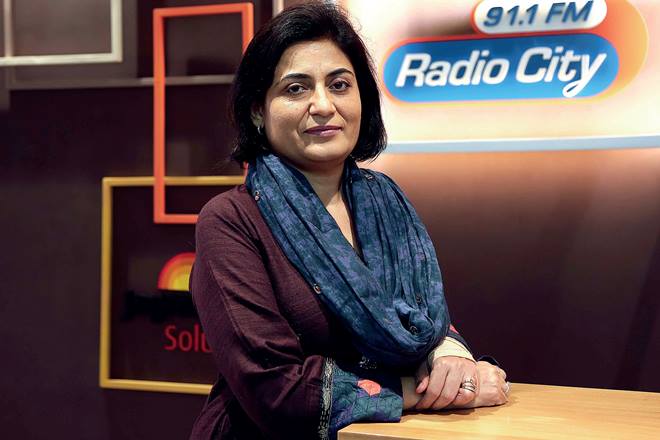Music Broadcast Limited, which operates Radio City, has been seeing some exciting times lately, given its merger with Jagran Prakashan Group, picking up frequencies strategically in the first batch of the FM Phase III auctions and now receiving regulatory approval for its R400 crore IPO. Having opened for subscription on March 6, BrandWagon’s Chandni Mathur catches up with Apurva Purohit to know more on the future plans of the network.
Excerpts:
What kind of funding are you looking to raise through the IPO?
We intend to raise around R400 crore through the primary issue and then there are some shares which the promoter family is selling. The objective is to retire the debt we had taken to fund Phase III launches. We will be retiring the debt of around R300 crore over a period of time, of which R200 crore is NCDs and the rest is owed to the Jagran Prakashan Group.
What does the growth curve for Radio City look like?
We took a strategic call since 2005 to be in the top metros and higher SEC A, B advertiser potential markets, so we have filled the gaps by acquiring frequencies in cities like Patna, Madurai and Kanpur. We also have deep presence in some key states like Maharashtra, Rajasthan and UP. In the North, Radio City’s footprint was slightly lower and now with Jagran’s support, it is an area of growth. We now have 39 stations of which 36 are operational.
Also Watch:
How is radio shaping up post FM Phase III auctions?
The industry’s growth has been linked to the deregulation process. As more frequencies launch and geographies open, it will expand. We have been maintaining that a 4% share of total ad spends is a subdued number; it has to be 8-12% which is the global average. Our latest data shows that even in the UK and the US where internet penetration is reasonably high, terrestrial FM penetration is at 93% while internet radio penetration is 23%. Growth will happen only if there is geographical expansion.
FM radio in India has always faced the problem of homogeneity. With new stations launching, how will you overcome this?
All of us are setting up stations in additional cities. There aren’t many new stations coming up in the main cities, so I don’t see much churn in big markets. The core listeners of radio can differentiate easily and that’s because we take a lot of effort in packaging songs and we all have different scientifically researched charts. RJs too have their own loyalty and programmes; we build shows around their personalities and place songs accordingly.
What is the contribution of PlanetRadioCity to the P&L? Do you see online radio gaining traction in the future?
We now have 40 web stations. Internet radio has an interesting need gap that PlanetRadioCity.com is fulfilling. We have people listening to us from across the globe at different points of time so one cannot segment it on day parts or TG. Monetising on digital is still a challenge and presently the contribution to revenues is in single digits. Radio still needs to become 1% of the GDP as an industry. New media and digital will push that number up. Once you have a significant number of listeners, advertisers will follow.
Have Radio Mantra and Radio City been integrated completely? How are you driving synergies between the print publications of the group?
The integration has happened but the re-branding exercise is not over. For the last one year, we have been selling together. While Mantra was doing well, it didn’t have the opportunity to get national advertisers and City has helped there. Synergies come from across marketing and information sharing. As we enter new markets, there will be a lot of synergy that we will derive from Jagran’s local advertisers. We don’t have much synergy in selling because all of us have individual sales teams and we believe that’s the best as each team is fighting for its share of the market.
TV measurement has evolved with BARC. Why is radio relying on RAM?
The radio industry had so many other things to grapple with including Phase III that it took up a lot of our collective bandwidth. We all do our own measurement and research so we are very clear on our positions. From a selling point of view, all of us keep talking but both advertisers and the industry have to come together to share the cost. Nowhere in the world is radio measurement cheap. So both have to be invested in that; we keep having conversations with MRUC but till somebody comes and evolves a cost effective way of measuring radio, RAM will continue.
Do you see more advertisers coming on board with launches in tier II markets?
National advertisers have already crossed the hump where they were not buying radio except as a tactical medium if there was some money left over. Most national advertisers have understood the dynamics of a multimedia model. They are already spending 4% of their money on radio. It’s not that they don’t have markets beyond the top 86 cities. We are hoping with this expansion, national advertisers will increase spends.
Chandni.Mathur@expressindia.com @chandni_mathur


